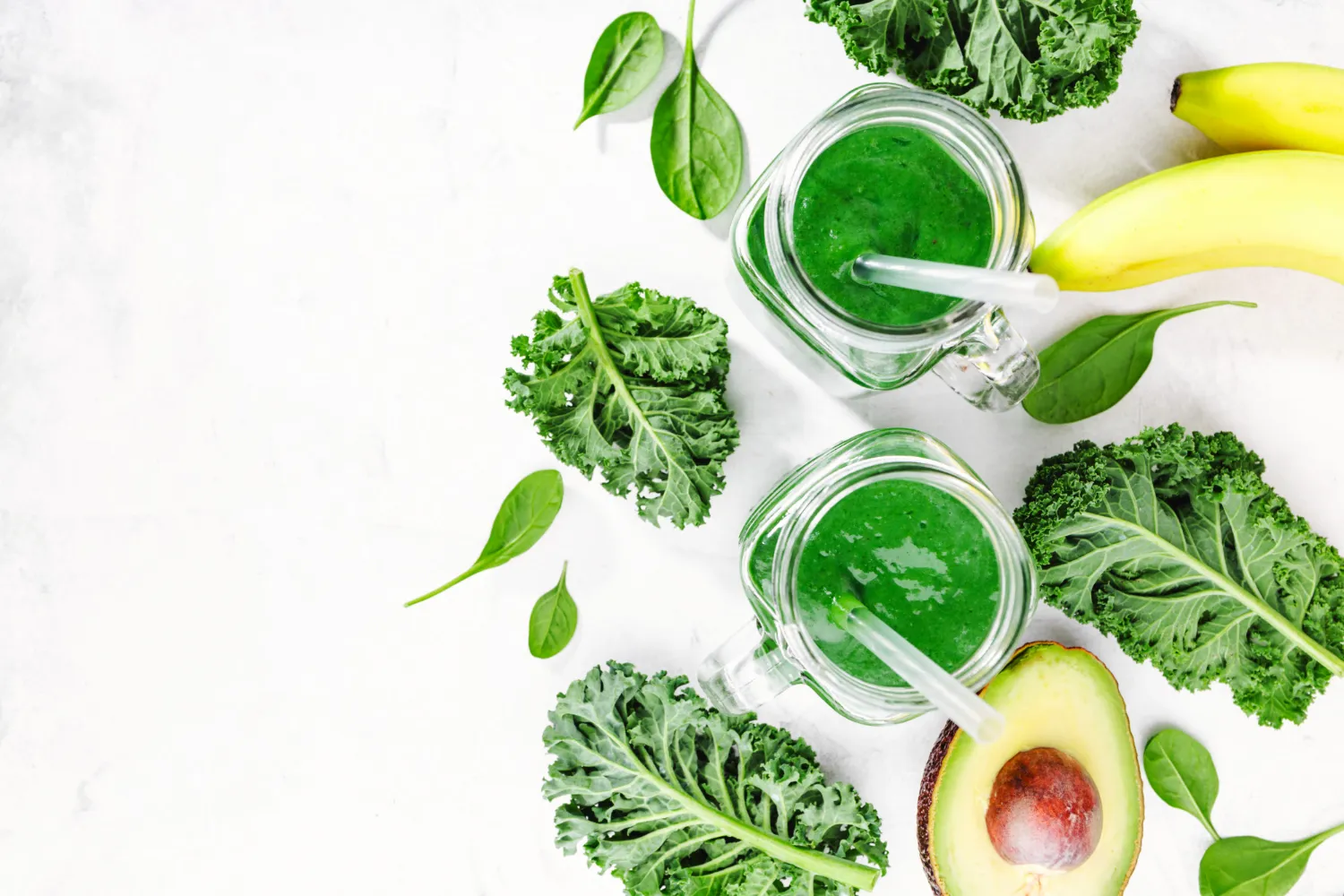Weight loss that fits your goals and your life.
Get your plan
Weight loss that fits your goals and your life.
Get your plan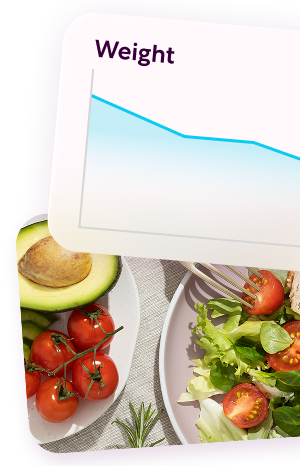
As the name implies, a 10-day liquid diet replaces solid foods with nutrient-dense beverages, such as protein smoothies, vegetable broths, and meal-replacement shakes. It’s a popular choice for women looking to jumpstart their weight loss journey, resulting in immediate health benefits such as reducing bloating or resetting eating habits after periods of stress or hormonal fluctuations.
Unlike extreme juice cleanses, a well-structured liquid plan maintains adequate protein intake to preserve muscle mass while creating the calorie deficit needed for fat loss. This temporary eating pattern works by simplifying digestion and controlling portions. However, like every other diet plan, success depends heavily on proper nutrient balance and realistic expectations.
What Is a 10‑Day Liquid Diet?

A 10-day liquid diet involves consuming only beverages and foods that become liquid at room temperature. This includes blended smoothies made with fruits and protein powder, savory bone broths enriched with collagen, creamy soups pureed until smooth, and commercially prepared meal-replacement shakes. The approach differs from water fasting or juice-only cleanses because it prioritizes complete nutrition rather than severe calorie restriction.
Most participants consume 1,200 to 1,500 calories daily through 4-5 liquid meals spaced throughout the day. This calorie range creates a moderate deficit for most women while providing enough energy to maintain daily activities.
The 10-day timeframe allows the body to adapt to liquid nutrition without triggering a significant metabolic slowdown that occurs with longer restrictive periods.
Types of Liquids Covered
The plan incorporates three main categories of liquids, which are:
- Protein-rich smoothies combine whey or plant-based protein powder with ingredients such as bananas, spinach, almond butter, and unsweetened almond milk. These provide sustained energy and muscle-building amino acids.
- Savory options include bone broth made from grass-fed beef or free-range chicken bones, which supplies collagen and minerals that support joint health.
- Vegetable-based soups offer fiber and antioxidants when butternut squash, cauliflower, or broccoli gets pureed with coconut milk or vegetable stock.
Commercial meal-replacement shakes can supplement homemade options. However, it’s important to read labels. Many store-bought shakes contain excessive amounts of sugar and artificial ingredients.
Why It Appeals to Midlife Women
Liquid diets are particularly appealing for women over 40. Declining estrogen levels during perimenopause and menopause slow metabolism and encourage belly fat. Digestive sensitivity often increases with age as well, making easily absorbed liquid nutrients more comfortable to eat than heavy solid meals that often leave you feeling sluggish and are prone to overconsumption.
Years of processed food consumption can lead to feelings of bloatedness and tiredness. Further adding to the stress is balancing work and personal life while following irregular eating patterns.
This is where eating a liquid diet comes in. It provides a mental and physical reset that helps identify problematic foods while giving the digestive system a temporary break, similar to a reset week. The controlled portions and simplified meal planning can also break cycles of emotional eating that many women develop during stressful midlife transitions.
Nutritional Framework
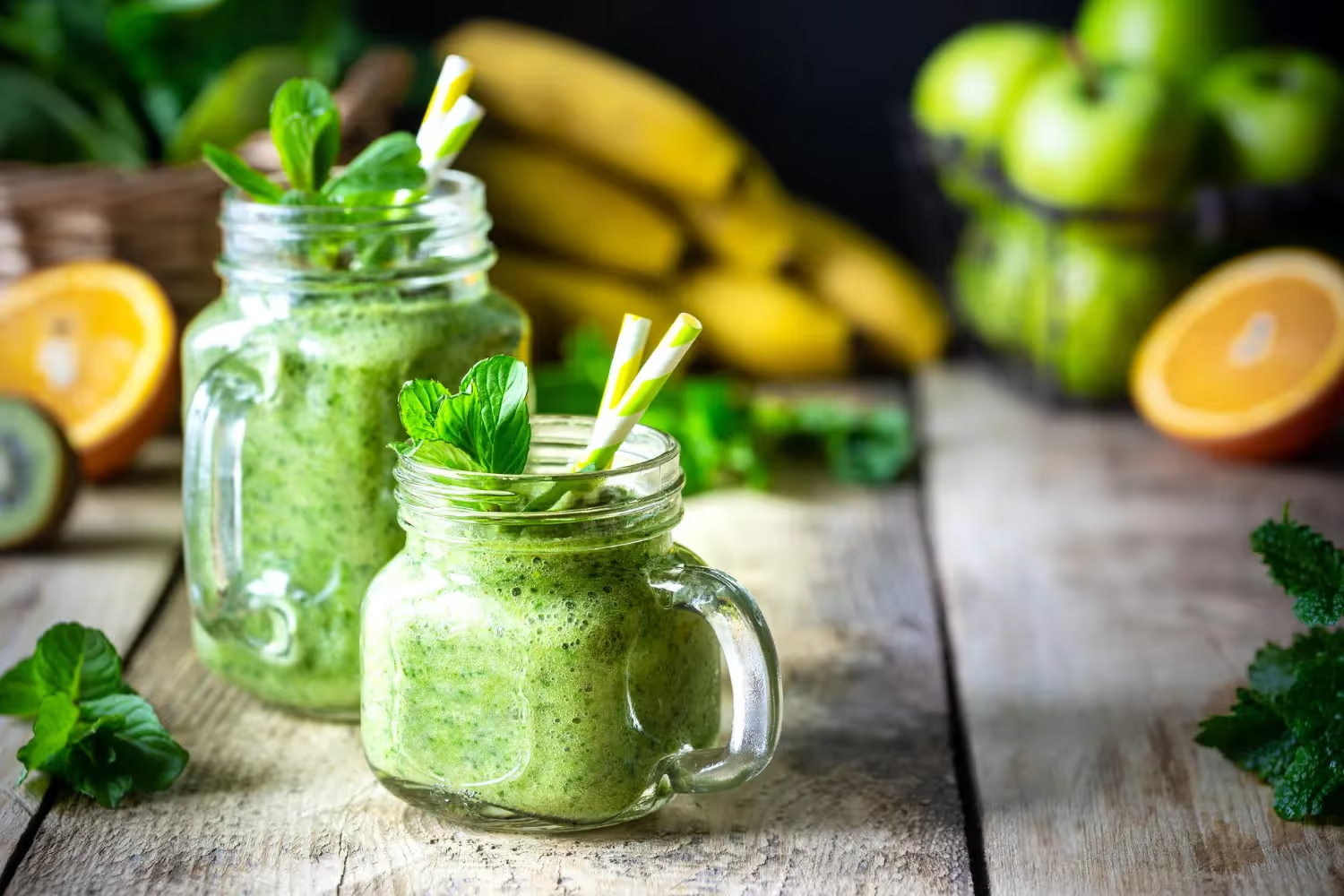
Success with any liquid diet depends on meeting basic nutritional needs despite consuming fewer total calories. Women over 40 have specific requirements for protein, calcium, and other nutrients that support bone density, muscle mass, and hormonal balance. Poor planning can lead to fatigue, muscle loss, and metabolic slowdown that makes long-term weight maintenance more difficult.
The framework prioritizes three key areas: adequate protein to preserve lean muscle mass, sufficient fiber to support digestive health, and complete vitamin and mineral profiles to prevent deficiencies.
Each liquid meal should contain a balance of macronutrients rather than relying heavily on sugary fruit juices or broths alone.
Calorie & Protein Targets
According to studies, most women over 40 require a minimum of 1,200 calories daily to maintain basic metabolic functions, although active individuals may need 1,400-1,500 calories. Creating too large a deficit can trigger metabolic adaptation where the body conserves energy by slowing thyroid function and reducing muscle mass.
Protein targets should reach 25-30 grams per meal, totaling 100-120 grams daily. This higher intake helps preserve muscle mass during calorie restriction and provides better satiety than carbohydrate-heavy liquids. Greek yogurt smoothies, protein powder shakes, and bone broth with added collagen peptides can all contribute to daily protein goals.
We recommend using our free macro calculator to find out exactly how many calories you should eat in a day, including the ideal protein, carbohydrate, and fat intake.
Fiber, Electrolytes & Micronutrients
Liquid diets often lack sufficient fiber, which can lead to digestive issues and blood sugar spikes. Adding ground flaxseed, chia seeds, or psyllium husk to smoothies provides soluble fiber that blends smoothly while supporting gut health. Aim for 25-30 grams of fiber daily through these additions, as well as pureed vegetables in soups.
Electrolyte balance becomes important when consuming fewer solid foods. Sodium from bone broth, potassium from coconut water, and magnesium from leafy greens in smoothies help maintain proper muscle function and prevent fatigue.
A high-quality multivitamin can help fill potential gaps, particularly in B vitamins, vitamin D, and iron, which, according to studies, are common deficiencies among women.
Sample 10‑Day Plan
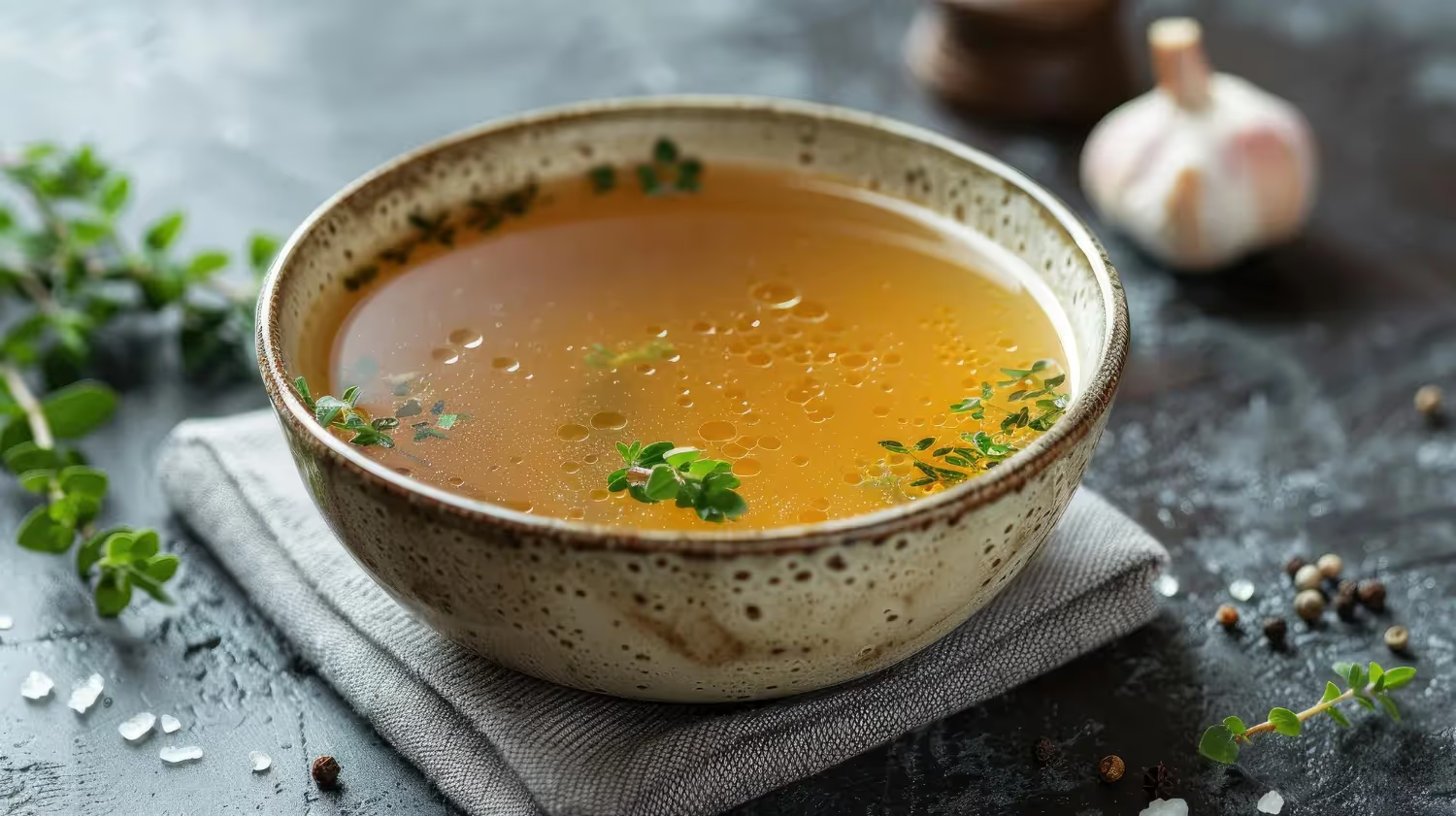
The following plan provides approximately 1,350 calories daily with balanced macronutrients across four liquid meals. Each day includes morning and afternoon smoothies, a midday vegetable soup, and evening bone broth. Herbal teas and water consumption should reach 8-10 cups daily to support hydration and toxin elimination.
Preparation becomes easier when ingredients are prepped in advance. We recommend freezing smoothie ingredients in individual portions, batch-cooking soups for 2-3 days, and preparing bone broth in large quantities.
Having backup meal-replacement shakes prevents deviation from the plan during busy days.
Day 1
- Breakfast: Vanilla protein smoothie containing 1 scoop whey protein, 1 cup unsweetened almond milk, 1/2 banana, 1 tablespoon almond butter, and 1 teaspoon ground flaxseed. This provides approximately 280 calories with 28 grams of protein.
- Lunch: Cream of tomato soup made by blending 1 cup organic tomato puree with 1/2 cup coconut milk, vegetable broth, and herbs. Add 1 scoop unflavored protein powder for extra amino acids, totaling 320 calories.
- Snack: The afternoon smoothie combines 1 cup spinach, 1/2 cup frozen berries, 1 scoop plant-based protein, coconut water, and 1 tablespoon chia seeds for 290 calories.
- Dinner: 2 cups warm bone broth seasoned with turmeric and ginger, providing 150 calories plus collagen.
Day 2
- Breakfast: Chocolate peanut butter smoothie, made with one scoop of chocolate protein powder, 1 cup of cashew milk, two tablespoons of natural peanut butter, 1/2 a frozen banana, and ice. This combination delivers 340 calories with healthy fats for sustained energy.
- Lunch: Pureed butternut squash with coconut milk, vegetable stock, and warming spices like cinnamon and nutmeg. Blend until completely smooth and add protein powder if desired, reaching 280 calories.
- Snack: Green smoothie made out of kale, cucumber, green apple, lemon juice, fresh ginger, and plant-based protein powder blended with coconut water. This refreshing option provides 260 calories with detoxifying chlorophyll.
- Dinner: Make the same bone broth from Day 1 for consistency at 150 calories. You can add different herbs and seasonings if you want a different flavor.
Day 3
- Breakfast: Tropical smoothie featuring mango, pineapple, coconut milk, vanilla protein powder, and a handful of spinach for hidden vegetables. The natural fruit sugars provide quick energy while protein prevents blood sugar crashes, totaling 310 calories.
- Lunch: Cream of mushroom using pureed mushrooms, vegetable broth, cashew cream, and herbs. Mushrooms provide umami flavor and important minerals like selenium and potassium. This savory option contains 300 calories when enhanced with protein powder.
- Snack: Berry protein smoothie with mixed frozen berries, Greek yogurt, vanilla extract, and almond milk for 275 calories. The natural antioxidants from berries support cellular health while Greek yogurt adds probiotics for digestive balance.
- Dinner: Evening bone broth with added sea salt and fresh herbs provides 150 calories and essential minerals.
Day 4
- Breakfast: Protein-enhanced iced coffee made with cold brew, vanilla protein powder, unsweetened almond milk, and a touch of stevia. This energizing start provides 260 calories while satisfying caffeine cravings without breaking the liquid format.
- Lunch: Pureed carrot ginger soup using roasted carrots, fresh ginger, coconut milk, and vegetable stock. The beta-carotene from carrots supports skin health while ginger aids digestion, delivering 290 calories in a warming, anti-inflammatory meal.
- Snack: Combine peach, vanilla protein powder, coconut milk, and a pinch of turmeric for a 280-calorie smoothie. Peaches provide vitamin C and natural sweetness while turmeric offers anti-inflammatory benefits.
- Dinner: Close the day with bone broth enhanced with garlic and black pepper for 150 calories and immune support.
Day 5
- Breakfast: Avocado, spinach, cucumber, lime juice, mint, and plant protein powder blended with coconut water. The healthy fats from avocado provide satiety and support hormone production, totaling 320 calories.
- Lunch: Cream of broccoli using steamed broccoli florets, onion, garlic, and cashew cream pureed until smooth. Broccoli supplies folate and vitamin K, important for bone health, reaching 285 calories when fortified with protein.
- Snack: Make a strawberry coconut smoothie with frozen strawberries, coconut milk, vanilla protein powder, and fresh mint for 270 calories. Strawberries provide vitamin C and folate while mint aids digestion.
- Dinner: Bone broth seasoned with lemon and fresh thyme for 150 calories and citrus brightness.
Day 6
- Breakfast: Chai-spiced protein smoothie combining vanilla protein powder, unsweetened almond milk, cinnamon, cardamom, ginger, and a touch of vanilla extract. These warming spices support metabolism and blood sugar control while providing 280 calories.
- Lunch: Pureed sweet potato with coconut milk, warming spices, and vegetable broth. Sweet potatoes offer complex carbohydrates and vitamin A for immune support, delivering 305 calories in a naturally sweet and satisfying meal.
- Snack: Afternoon smoothie includes orange, carrot juice, ginger, vanilla protein powder, and almond milk for 285 calories. This vibrant combination provides beta-carotene and vitamin C for immune function.
- Dinner: Evening bone broth with fresh rosemary and bay leaves delivers 150 calories with aromatic herbs.
Day 7
- Breakfast: Chocolate cherry smoothie using frozen cherries, chocolate protein powder, almond butter, and unsweetened cashew milk. Cherries provide natural melatonin that may improve sleep quality, totaling 315 calories.
- Lunch: Cream of cauliflower soup provides a mild, versatile base enhanced with herbs like thyme and rosemary. Cauliflower offers vitamin C and choline for brain health while remaining easily digestible at 270 calories.
- Snack: Pineapple spinach smoothie with pineapple chunks, baby spinach, coconut water, and plant protein powder for 265 calories. Pineapple contains bromelain enzymes that aid digestion, while spinach provides iron and folate.
- Dinner: Bone broth infused with ginger and turmeric for 150 calories and anti-inflammatory benefits.
Day 8
- Breakfast: Pumpkin spice smoothie featuring pumpkin puree, vanilla protein powder, cinnamon, nutmeg, and coconut milk. Pumpkin provides fiber and beta-carotene while creating a satisfying fall flavor profile at 295 calories.
- Lunch: Pureed white bean soup with rosemary, garlic, and vegetable stock. White beans add plant-based protein and fiber while creating a creamy texture when blended, reaching 310 calories.
- Snack: Afternoon smoothie features apple, cinnamon, vanilla protein powder, almond butter, and unsweetened almond milk for 295 calories. This combination mimics apple pie flavors while providing sustained energy from protein and healthy fats.
- Dinner: Bone broth with fresh parsley and celery provides 150 calories and supports kidney function.
Day 9
- Breakfast: Combine cucumber, fresh mint, lime juice, vanilla protein powder, and coconut water to make a cucumber mint smoothie. This hydrating option supports kidney function and provides cooling properties for 250 calories.
- Lunch: Pureed zucchini with basil, onion, and coconut cream. Zucchini offers potassium and vitamin C while remaining light and easily digestible, providing 275 calories when enhanced with protein.
- Snack: Blueberry lemon smoothie with frozen blueberries, lemon juice, vanilla protein powder, and coconut milk for 280 calories. Blueberries provide powerful antioxidants while lemon supports liver detoxification.
- Dinner: Bone broth seasoned with oregano and sage for 150 calories and Mediterranean flavors.
Day 10
- Breakfast: Vanilla cinnamon smoothie using vanilla protein powder, unsweetened almond milk, cinnamon, and a small amount of pure maple syrup. Cinnamon helps regulate blood sugar while providing comforting flavor at 285 calories.
- Lunch: Pureed asparagus soup featuring tender asparagus spears, leek, and vegetable broth. Asparagus provides folate and glutathione for detoxification support while delivering 290 calories in the final liquid meal.
- Snack: Combine banana, cocoa powder, almond butter, vanilla protein powder, and cashew milk for a smoothie with 300 calories. This satisfying combination provides comfort food flavors while maintaining nutritional balance.
- Dinner: End the 10-day journey with bone broth enhanced with fresh dill and lemon zest for 150 calories and a fresh finish.
Safety, Pitfalls & Monitoring

While attractive and convenient, liquid diets carry specific risks that become more pronounced in women over 40 due to changes in metabolism and hormone levels. Close monitoring prevents complications while maximizing benefits. Daily weight tracking may initially show an encouraging amount of rapid loss due to water and glycogen depletion, but sustainable fat loss is more slow and gradual.
Maintaining blood sugar stability requires particular attention when transitioning from solid foods to liquids.
Women with insulin resistance or prediabetes may experience energy crashes if smoothies contain too much fruit without adequate protein and fat. You don’t necessarily need to stop if this happens. Instead, try spacing liquid meals every 3-4 hours to prevent dramatic blood sugar swings that can trigger cravings and fatigue.
Energy Levels, Digestion & Blood Sugar
The first three days of this diet are usually the hardest. This is where initial symptoms such as fatigue, headaches, or digestive changes show up. Don’t worry. They’ll eventually resolve themselves as your body’s metabolism starts to adjust. But suppose low energy persists after Day 4.
In that case, you may want to reassess your diet and see if you’re restricting too many calories or if your macronutrient ratios need adjustment, especially if you’re fairly active.
Notable digestive changes during this period often include reduced bowel movements due to lower fiber intake, despite added fiber supplements. Gentle movement, like walking and adequate hydration, can help encourage your body’s digestive system to return to its usual self.
Blood sugar monitoring is important if you have diabetes or metabolic syndrome. Natural fruit sugars in smoothies can cause spikes even when combined with protein. Using lower-glycemic fruits like berries and adding healthy fats helps maintain steady glucose levels throughout the day.
Muscle Loss & Protein Sufficiency
Preserving lean muscle mass remains the primary concern during any calorie-restricted period.
According to studies, women over 40 naturally lose muscle mass at a rate of approximately 1% per year, making adequate protein intake a non-negotiable necessity. Consuming less than 100 grams daily can accelerate muscle breakdown and slow metabolism, especially if you strength train or do resistance training, which brings us to our next point.
Resistance and strength training during the liquid diet helps signal the body to preserve muscle tissue.
Light bodyweight exercises or resistance bands can maintain muscle activation without requiring excessive energy. Complete rest may seem appealing, but it promotes muscle loss during calorie restriction.
Protein timing also plays a crucial role in muscle preservation. Distributing protein evenly across meals, rather than consuming most of it at dinner, supports muscle protein synthesis throughout the day.
As a rule of thumb, each liquid meal should contain at least 20-25 grams of complete protein from animal or properly combined plant sources.
When to Pause or Modify
Always follow safe fasting practices and dieting approaches. Never subject your body to unnecessary stress. Otherwise, all your efforts will be for nothing.
Several warning signs indicate the need to pause or modify the liquid diet immediately. Severe fatigue that interferes with daily activities, dizziness upon standing, or inability to concentrate suggests that you aren’t eating enough.
Make sure that you monitor any pre-existing conditions you might have closely, especially if you’re taking medications for blood pressure or diabetes.
Persistent digestive issues beyond the initial adjustment period may indicate food sensitivities or inadequate fiber intake. Adding more vegetable-based soups or increasing fiber supplements can help address constipation, while reducing dairy-based options may be beneficial for those with lactose sensitivity.
Transition to Solid Food

The refeeding phase, which occurs after 10 days, determines long-term success more than the liquid diet itself. Rapid return to previous eating patterns often triggers rebound weight gain and digestive discomfort. A gradual 5-7 day transition is best to maintain benefits while reintroducing solid foods safely.
Starting with easily digestible options prevents overwhelming your digestive system, which has now adapted to a fully liquid diet. The stomach will literally be smaller and less used to expanding to accommodate large amounts of food, so it’s more sensitive to texture and volume changes.
Continue the same mindful eating practices you followed during the liquid phase to support long-term portion control and food awareness.
Refeeding Phases & Sample Meals
Days 1-2 post-liquid diet should include soft, easily chewed foods that bridge the gap between liquids and normal textures. Eat steel-cut oatmeal with mashed banana and almond butter for breakfast, providing familiar flavors in a semi-solid form. Meanwhile, lunch could include pureed lentil soup with small pieces of soft vegetables, gradually reintroducing fiber and texture.
For Days 3-4, you can start adding more substantial textures while maintaining the nutrient density established during the liquid phase. Scrambled eggs with sautéed spinach provide high-quality protein in a soft texture. Baked sweet potato with Greek yogurt offers complex carbohydrates and probiotics for digestive health.
By Days 5-7, you can start gradually returning to normal textures while emphasizing the balanced approach learned during the liquid phase. Grilled chicken with steamed broccoli reintroduces lean protein and vegetables in familiar forms, making them a healthy option.
The key remains in eating smaller portions and eating slowly to recognize satiety signals that may have become more sensitive.
Tools to Maintain Balanced Diet Afterwards
Incorporating liquid meals as regular meal replacements can help maintain weight loss and simplify nutrition planning. But is it safe for the long term? It depends. You can opt for a mixed approach, replacing breakfast with a protein smoothie or lunch with a vegetable soup, which provides portion control while maintaining the convenience factor that made the 10-day plan manageable.
This is where having a food journaling habit comes in handy. You can start by using a fitness calculator to track your progress before the 10-day diet and after transitioning back to your regular routine. This provides a baseline that you can refer to and compare your progress with over time.
Aside from your starting fitness levels, energy, and weight, log foods that trigger bloating, cravings, or energy crashes after the reset period. You may be surprised to discover previously unrecognized food sensitivities during the reintroduction process. Keeping a simple log of foods eaten and energy levels helps identify optimal choices for long-term success.
Meal prep strategies developed during the liquid phase can be effectively applied to solid food planning.
Batch-cooking proteins, pre-chopping vegetables, and preparing healthy snacks prevent the decision fatigue that often leads to poor food choices during busy midlife schedules.
Alternatives to Consider

The structured 10-day liquid approach may not suit every woman's lifestyle, health status, or preferences. The good news? You don’t have to follow it exclusively. You can modify it to fit your preference while following similar principles. Understanding how to tweak this diet and other alternatives lets you choose the most sustainable approach for your individual circumstances and health goals.
The key is finding an approach that creates a calorie deficit while meeting nutritional needs and fitting into existing routines.
Broth-Only or Smoothie-Only Approaches
A broth-only approach focuses solely on vegetable, chicken, or bone broths for 5-7 days rather than 10. This method provides minerals and collagen while being extremely low in calories. It’s best if you have a sensitive digestive system, which tolerates broths better compared to dairy-based smoothies or high-fiber vegetable soups.
However, it isn’t a perfect diet. Broth-only plans lack adequate protein and essential nutrients for periods longer than 3-5 days. Adding protein powder to broths or consuming collagen peptides helps address this limitation. For this reason, this approach is better for digestive relief than weight loss.
Smoothie-only plans offer a more diverse nutritional profile through the combination of fruits, vegetables, protein powders, and healthy fats blended into portable meals. This approach provides 800-1200 calories daily while maintaining convenience for busy lifestyles.
We recommend smoothie-only diets for those who travel frequently or have limited cooking facilities and want to avoid overeating or undernourishing their body.
Intermittent Fasting & Structured Calorie Counting
Intermittent fasting combined with liquid meals during eating windows can provide similar metabolic benefits without eliminating solid foods. A 16:8 pattern with two liquid meals during the 8-hour eating window allows for calorie control while providing flexibility for family dinners or social situations.
This hybrid approach works particularly well for women who find complete liquid diets too restrictive but want the simplicity of prepared nutrition during busy workdays. Consuming a protein smoothie at noon and vegetable soup at 6 PM within an 8-hour window provides structure while maintaining some food freedom.
Structured calorie counting with liquid meal replacements offers another middle ground. Replacing breakfast and lunch with controlled liquid options while eating a balanced solid dinner helps create consistent calorie deficits without the social isolation that complete liquid diets can create.
This approach allows for family meals and dining out while maintaining portion control during solo meals.
Summary & Key Takeaways
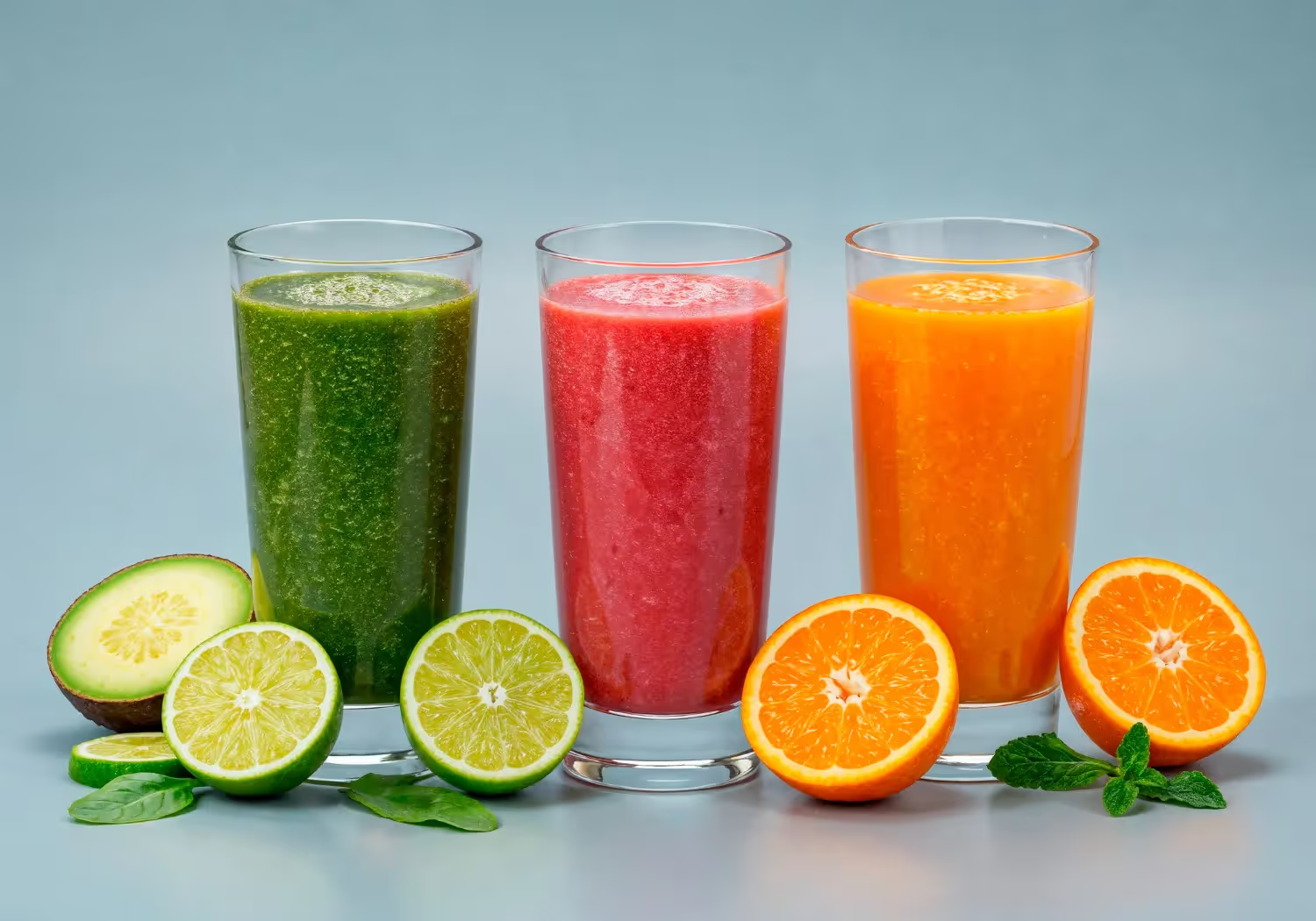
A 10-day liquid diet can provide short-term weight loss and digestive reset. The approach works by controlling calories, simplifying digestion, and providing complete nutrition through carefully selected beverages and pureed foods. Success depends heavily on adequate protein intake, proper hydration, and realistic expectations about sustainable results.
The structured nature appeals if you’re looking for a clear plan during stressful periods or after periods of poor eating habits. However, the restrictive nature means it functions best as a short-term intervention rather than a long-term lifestyle change.
Most benefits come from the calorie deficit and improved food awareness rather than any unique properties of liquid nutrition itself.
For best results, follow our guide on how to transition after a short-term diet to avoid relapsing into old habits.
Is This Diet Right for You?
This approach suits those who respond well to structured eating plans and can commit to preparing smoothies and soups. Those with busy schedules who struggle with portion control often find the pre-planned nature of these meals helpful in breaking the cycle of grabbing and consuming processed foods.
Certain conditions don’t work well with liquid diets. Diabetes, kidney disease, eating disorder history, or current medication for blood pressure or blood sugar require medical supervision before attempting any restrictive eating plan. Pregnant or breastfeeding women should never restrict calories through liquid-only nutrition.
Our recommendation is to view this diet as a short-term reset rather than a quick fix for long-term weight management.
Best Practices & Safety Tips
Never extend the liquid diet beyond 10 days without medical supervision. The restrictive nature can lead to nutrient deficiencies and metabolic slowdown with longer duration. Plan the transition period before starting to prevent rebound overeating when solid foods return.
Follow these additional tips for your safety and for the best results:
- Invest in a high-quality blender for smooth textures and consistent results.
- Prep ingredients in advance to prevent deviation during busy days.
- Keep backup meal-replacement shakes available for emergencies or travel situations that disrupt homemade meal planning.
- Monitor energy levels, mood, and physical symptoms daily. Discontinue immediately if severe fatigue, dizziness, or digestive distress persists beyond the initial 2-3 day adjustment period.
- Stay hydrated with water and herbal teas beyond the liquid meals themselves.
Weight loss that fits your goals and your life.
Get your plan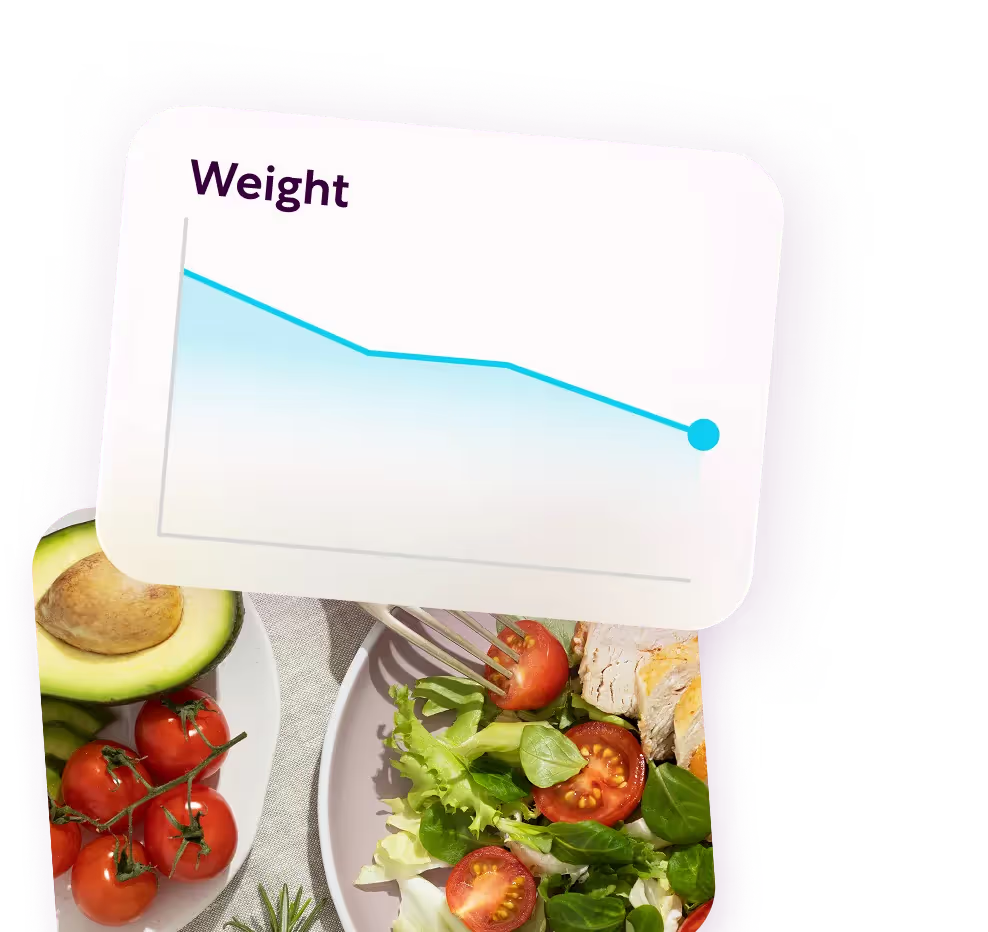
Sources
- Erdélyi, Aliz, et al. "The Importance of Nutrition in Menopause and Perimenopause—A Review." Nutrients, vol. 16, no. 1, 2023, p. 27, https://doi.org/10.3390/nu16010027.
- Stoffel, Nicole U., et al. "Oral Iron Supplementation in Iron-deficient Women: How Much and How Often?" Molecular Aspects of Medicine, vol. 75, 2020, p. 100865, https://doi.org/10.1016/j.mam.2020.100865.
- Keller, Karsten, and Martin Engelhardt. "Strength and Muscle Mass Loss with Aging Process. Age and Strength Loss." Muscles, Ligaments and Tendons Journal, vol. 3, no. 4, 2014, p. 346, https://pmc.ncbi.nlm.nih.gov/articles/PMC3940510/.
FAQs
Why might a liquid diet be beneficial for women over 40?
For women over 40, a short-term, well-planned liquid diet can act as a structured reset. It can help break a weight loss plateau, reduce digestive load and bloating, and simplify calorie control. By focusing on nutrient-dense liquids, it can provide a mental break from meal planning and help kick-start healthier habits.
Is a 10-day liquid diet safe?
A short-term liquid diet can be safe for healthy individuals when done correctly. The key is to ensure your liquids are nutrient-dense—rich in protein, fiber, vitamins, and minerals—not just sugar-filled juices. It is not suitable for everyone, especially those with medical conditions like diabetes. Always consult with a doctor before beginning this or any highly restrictive diet plan.
What kind of liquids are included in this diet plan?
This is not a "juice cleanse." The plan focuses on balanced nutrition through liquids like protein shakes (using whey, casein, or plant-based protein powders), blended vegetable soups, bone broths, and nutrient-rich smoothies that include fiber from fruits and vegetables, and healthy fats from avocado or seeds. This approach helps maintain muscle mass and control hunger.
How much weight can I realistically lose in 10 days?
Weight loss varies significantly between individuals. While you may see a noticeable drop on the scale, it's important to understand that a significant portion of this initial loss is typically water weight and reduced gut content, not just fat. This plan is best viewed as a tool to initiate momentum for a longer-term, sustainable weight loss journey.
What should I do after the 10-day liquid diet is over?
Transitioning off the diet correctly is crucial to maintaining your results. You should gradually reintroduce solid foods over several days, starting with soft, easily digestible options like steamed vegetables, eggs, and yogurt. The goal is to use the momentum from the 10-day plan to transition into a sustainable, whole-foods-based eating pattern for long-term health and weight management.


